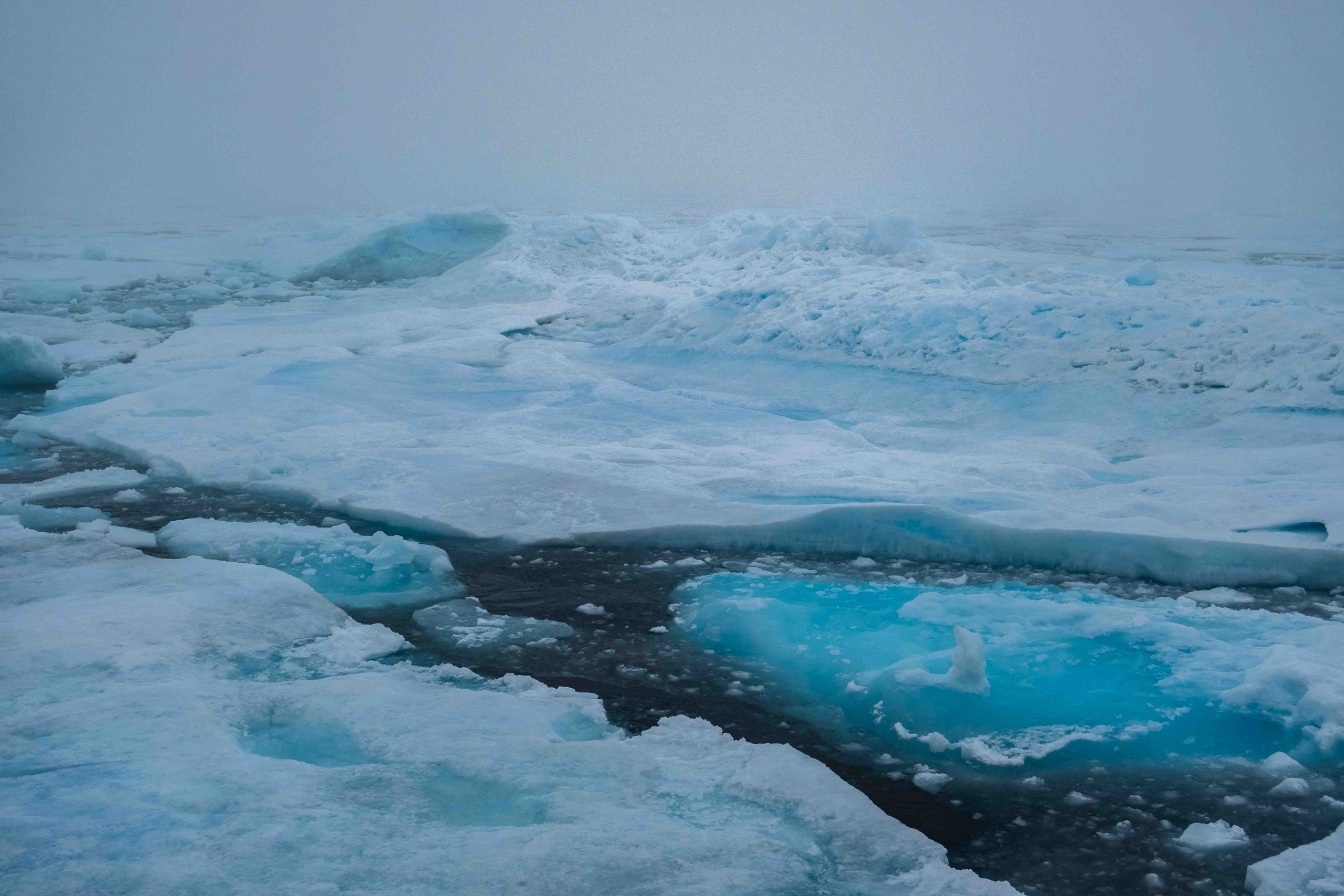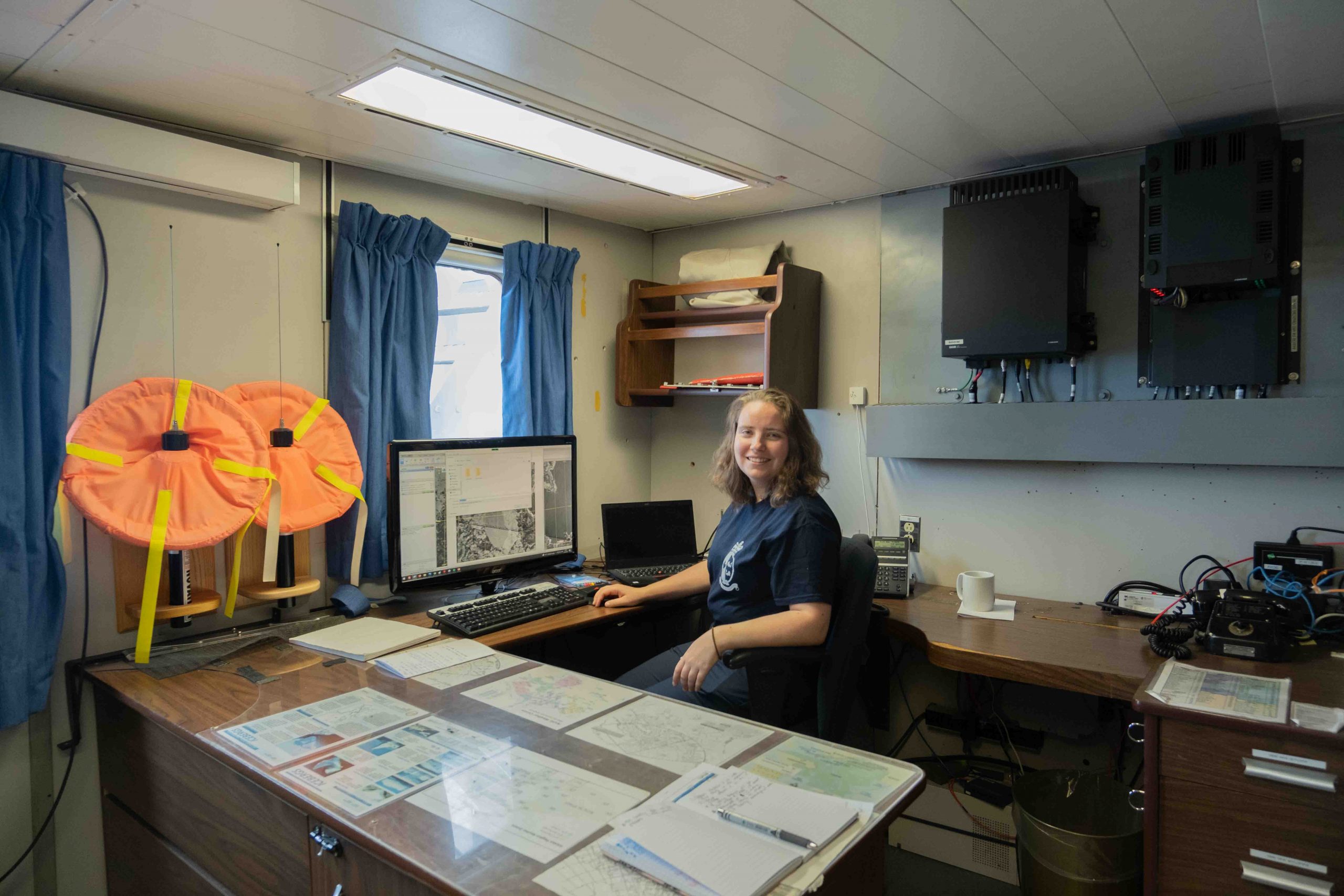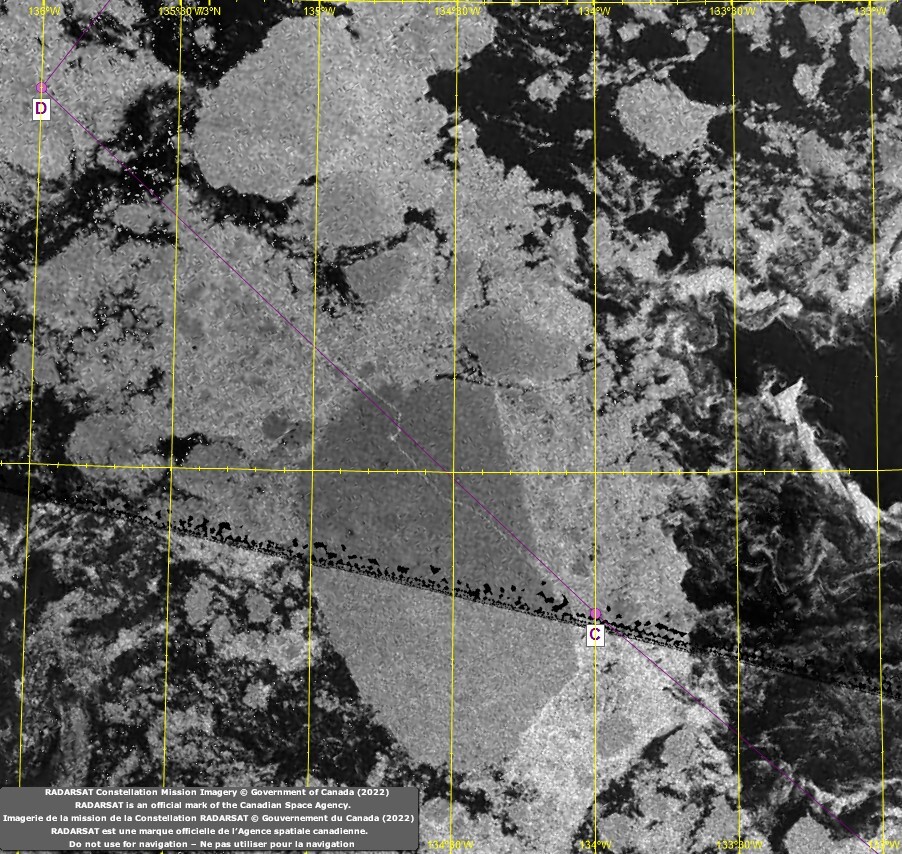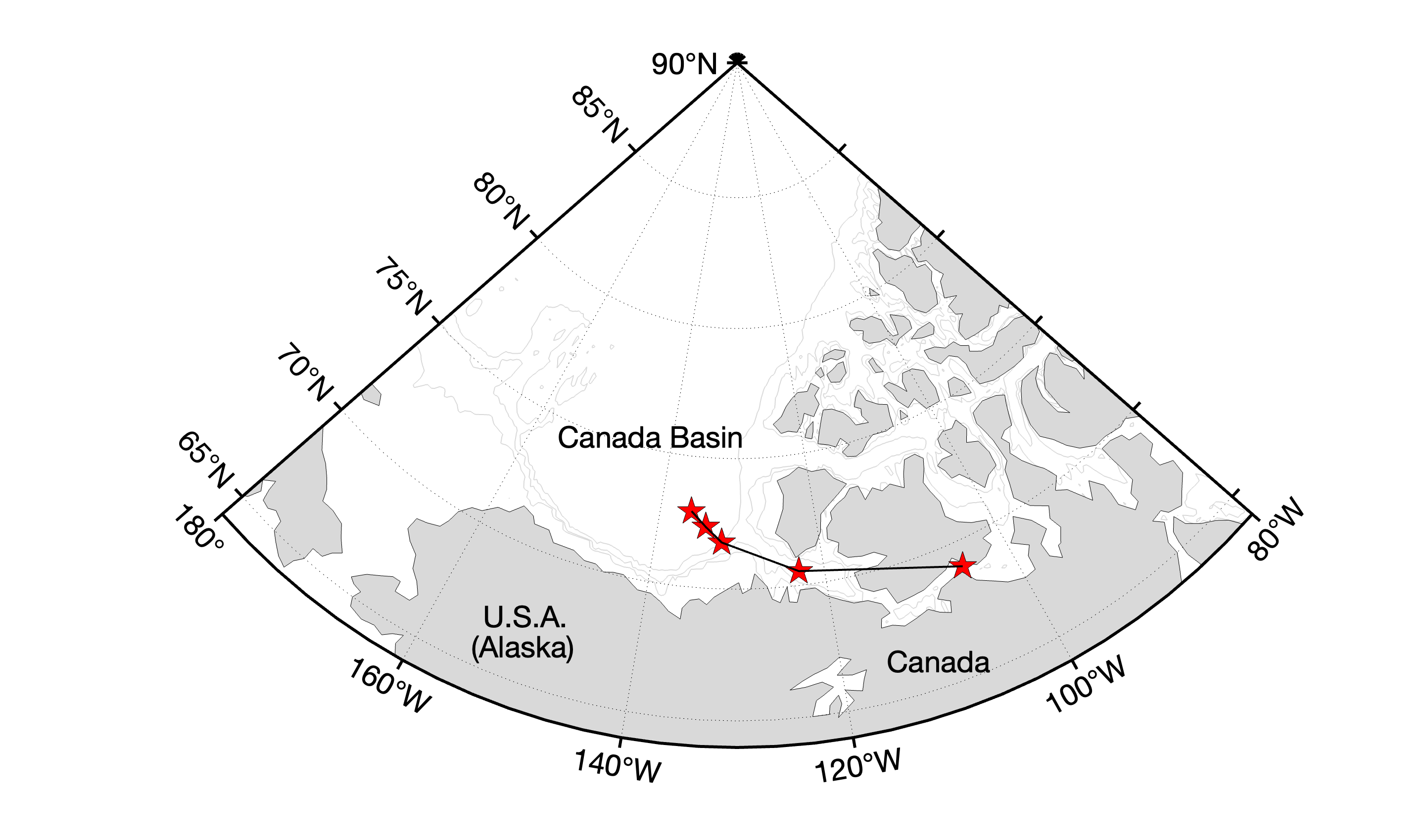Dispatch 4: We're in the Ice!
Elizabeth Bailey
September 19, 2022
Sea ice is one of the main features of the Arctic Ocean. Not to be confused with icebergs (which originate from glaciers on land), sea ice is formed when ocean water freezes. In the wintertime, sea ice covers most, if not all, of the Arctic Ocean. However, the ice extent recedes in the summertime, establishing a seasonal cycle of ice growth in the winter and melt in the summer.
Last night’s station was our first CTD Rosette cast in the ice pack. When putting instruments into the ocean with sea ice present, it is important for the crew and scientists to be diligent about watching the sea ice around the ship. Since sea ice can drift freely on the surface of the ocean, the ice conditions can change rapidly and ice floes (i.e., single pieces of sea ice) can suddenly become a danger to the instruments we’ve put into the water.
For several hours during the night, we went through quite an ordeal of navigating through the ice. It took hours for the ship to back up and ram its way through a big ice floe. In particular, the ship had to break through a large, thick floe of old sea ice – yes, sea ice has an age and can get old!
How do we age sea ice? At the end of each summer (on October 1st), ice becomes one year older. First-year ice is sea ice that has survived its first summer, while older or multiyear ice has survived many summertime melts. Older sea ice is often distinguished by its thickness and sometimes salinity with older ice typically thicker and fresher than younger ice.
On board, we have an ice specialist who assists with analyzing the ice conditions and how to navigate the ship through it. Each morning, Kristen Jeske, the ice specialist, gets out of bed and begins compiling a variety of weather and ice reports. These reports are critical for determining the route the ship should take to get through the ice field or around any particularly large floes. She often will give suggestions for possible ways for the ship to traverse through the ice, so that we can stay on course and not get stuck trying to plow through very thick ice. Last night, we ended up having to go back and forth in an ice floe, which slowed down the ship and delayed a CTD station for a couple of hours until we were able to get through it. We are hoping for relatively smooth sailing for the days to come!




